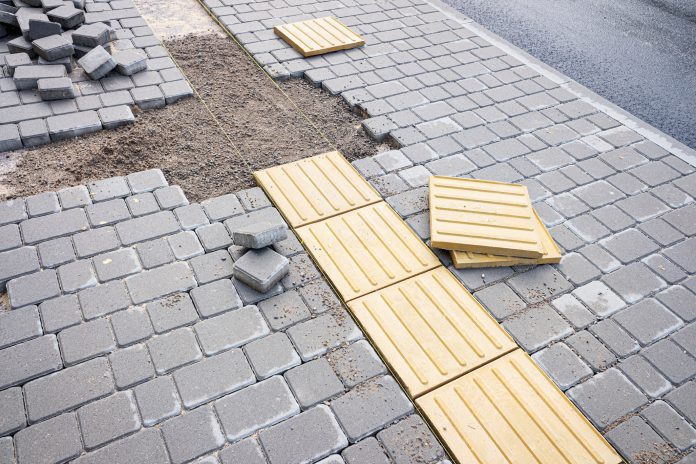Ian Streets, managing director of About Access, finds opportunities to achieve educational and commercial benefits by improving accessibility
A recent visit to an historic school prompted the question of why, in looking back at the features of a site which need to be protected, we don’t also look forward to make sure we’re not storing up trouble with our current design and construction policies.
According to Historic England, there are more than 5,000 listed school buildings across the country, but it doesn’t end there. It’s also reported there are over 3,000 listed hospital buildings and, of course, there are many more castles, country houses, churches and the rest.
They’ll all date back to a time when architects and builders didn’t have to worry too much about accessibility, but there’s no doubt the properties have been upgraded over the years, adding up to a catalogue of missed opportunities.
Historic England has developed guidelines to improve accessibility
Historic England, the body charged with championing the nation’s heritage, has developed its own guidelines to ensure any improvements adopt the principles of constructive conservation.
With schools, their case studies highlight projects which have succeeded in retaining original features and character while enhancing the learning environment. We see evidence that some of the projects also resulted in improved accessibility. But we know from our own experience that this hasn’t always been the case, and we also know that it’s not always the fault of the building’s operators.
Our visit to a Grade I listed school found the management team wrestling with the need to make their facilities accessible in readiness for the arrival of a student who uses a wheelchair. Or, more to the point, making them accessible to wheelchair users generally, or indeed to people – students, staff, visitors – who have other impairments.
The site has been developed gradually with refurbishment and new build
The site, parts of which are said to date back to the Middle Ages, has been developed gradually with refurbishment and new build, and it meets most needs of the modern education system.
But it also falls short in some areas. Non-disabled students can enjoy the full experience offered by the school but the history, which is part of the attraction of the property, can also present a barrier for others, and this is what we were called in to assess.
The historic features also limit the school’s commercial opportunities. The setting and structure are impressive and many will consider them perfect for a conference, wedding or other functions. But not if disabled and elderly guests can’t get in.
In the background is a difficult relationship between the school and the local conservation officer. They’ve become embroiled in disagreements in the past about changes to the building, with the result that the school is eager to explore all the options before presenting its next proposal.
Improving accessibility is needed to enable students’ future success
A balance is needed to prevent students working for a bright future from being hampered by the history of their surroundings. The school’s view is that the access can’t be improved. They sought the input of an access consultant to confirm that, or to suggest solutions.
The student at the centre of our work can access about 95% of the educational areas, but the sixth form centre presents obstacles with steps in a number of key locations.
On the ground floor, most of these could be resolved by raising the external ground to the same level, using temporary ramps and installing a sesame lift which would be hidden from view when not being used. But there are also other steps where the total rise would require a ramp of significant length which would take up too much space.
Bigger problems arise when it comes to trying to access the upper floors. They are generally used only by staff and for functions. It would appear the school has never had any staff with access requirements, and any social guests who are unable to manage the climb have had to miss out.
Clearly then, in committing funds to enable access to the ground floor it would also be worth exploring the possible benefits of additional investment to make the upper floors accessible.
Improving accessibility without affecting the visual appeal
We identified areas where hidden lifts could be installed. It reminded us of a visit to an abbey dating back more than 1,500 years where a few decades ago concrete had been laid on top of original walls because it was considered at the time to be a good way of protecting them from the weather. There’s never any fuss about it because the tourists never see it.
That may be a crude example, but it shows how changes can be made to an historic property without affecting the visual appeal.
It also made us think about buildings that have been constructed much more recently in ways that you would not contemplate today. That should lead us to look very carefully at the projects we are doing now which might raise issues in the years to come. We believe that buildings evolve over time, especially historic properties but also more modern structures, even within a few decades of being built.
In our case study, we’ve advised the school to seek input from lift suppliers and to engage a historic buildings consultant or a conservation architect, because they will speak the same language as the conservation officer.
Whatever the school management decide, when they talk to the conservation officer they will now have the evidence to show where they can make improvements to the building. They can also demonstrate that they have explored all reasonable options.
As things stand, the shortcomings at the school present a barrier to a person’s education and to the establishment’s commercial opportunities, which don’t end with social functions.
Going back to those 5,000 schools that have listed buildings, it’s likely they are all private institutions. Families want to send their children there; they can afford the fees but they might not be able to overcome the accessibility issues. The potential for return on investment should be obvious.
Ian Streets
CEO
NRAC Consultant
Tel: +44 1482 651101
Ian@aboutaccess.co.uk
*Please note: This is a commercial profile.














